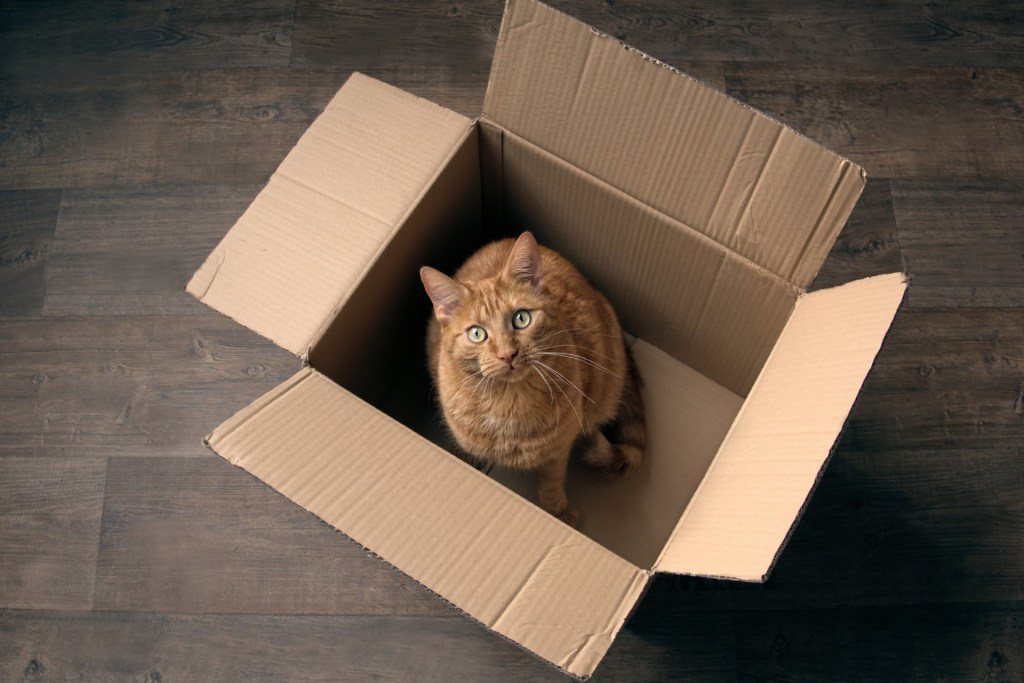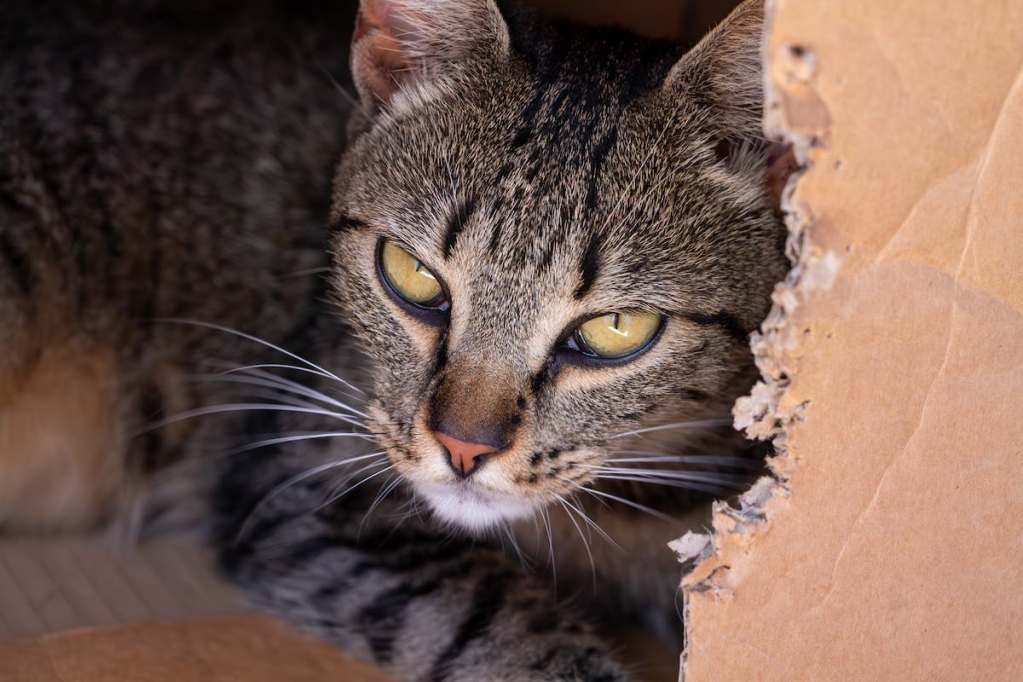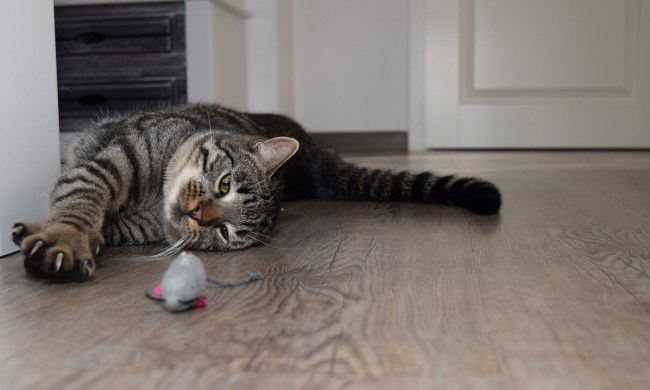
Cat owners have all been there: You order your cat a new cat bed, cat tree, or other item that comes packed in a box. When you unpack the item, your cat inevitably plays with the box more than he uses the item that came with it. This adoration of boxes is plenty common in cats, but it also seems a little odd.
Boxes are basic; there’s nothing especially exciting about them — or at least that’s what you might think. To your cat, however, boxes are tempting for many reasons, and they’re the perfect space to explore, sleep, and play in. But let’s dive in deeper: Why do cats like boxes, exactly?

Why do cats like boxes?
Cats are naturally curious, so of course, they’re going to want to check out anything new in your home. When that something new is a box, you can bet that your cat will gravitate to it. Once your cat discovers how safe, cozy, and fun the box is, chances are he’s going to settle down inside it and not want to leave. But there are a few specific reasons why some cats tend to seek out cardboard boxes over and over again.
To cats, small spaces like boxes feel safe
Boxes create an environment that helps cats feel safe. Cats naturally seek out small, dark, private spaces when they want to feel secure or doze off. Boxes offer all those properties, making them highly desirable spaces.
Smaller boxes that create a slightly tighter fit around the cat may offer increased security. Cats tend to look for small spaces where they’re pressed up against objects, whether those are the walls of a closet or the arm of your couch. A box offers this support and security, and it might help reduce your kitty’s anxiety. Try to pay attention to when your cat climbs into their box, especially when it seems out of nowhere.
Boxes can be cozy and warm
Your cat might also seek out a box because of the warmth it offers. The enclosed space blocks out any drafts that might be present, and when your cat’s body heat is there to help warm it up, a box can make for a cozy spot that’s warmer than the rest of the house. Once your cat discovers this, he may seek out boxes when it’s time for a nap, knowing that the box will help keep him warm. If your cat always gets into the boxes on Christmas morning just to take the coziest cat nap, this may be part of the equation.
Boxes are entertaining and fun
Boxes are also tons of fun for cats to play with. They make a great scratching sound, and their texture is highly appealing to playful cats. This can be especially true for cats who like to scratch, though a cardboard box could end up being more fun than their cat scratcher.
A great box also makes for an ideal spot to ambush anyone else walking through the house, whether that’s you, a family member, or another pet. Many cats think that popping in and out of boxes is the perfect form of entertainment, so boxes become a sort of kitty playground.

How you can use boxes to your cat’s advantage
Knowing that cats love boxes means you can strategically use them to help your cat feel comfortable, encourage play, and more. To determine what kind your cat prefers, try introducing multiple-sized boxes. He’ll quickly let you know which he likes most.
You can use boxes to support your cat in many ways. You can cut holes in boxes and add some tantalizing catnip to create play areas and encourage your cat to stay active. Alternatively, consider adding a fleece blanket to your cat’s favorite box to make an even more comfortable sleeping spot — almost like a dog’s crate!
Strategically placing a box in your home can give your cat reassurance during stressful times, like if you’re bringing a new pet into the house. And if you’re bringing home a new cat, having a box ready and waiting for him can give him extra security during the stressful transition.

Can cardboard boxes be bad for cats?
Many cat owners love that their furry friend gravitates toward something cheap and commonly found. Cardboard boxes are cheaper than cat toys and crates, but that doesn’t mean they have no risks. Cardboard from packaging can often contain staples, string, and even glue that your cat could ingest. Even cardboard itself can create an intestinal blockage if swallowed, so be sure to monitor your cat whenever they get to play with cardboard. Or if they only use boxes for a cozy place to rest, find them something similar that isn’t cardboard!
Cats love boxes for many reasons. When you understand why boxes are so attractive to your cat, you can start to use them in different ways in your home to help your cat feel happy, secure, and even playful. Best of all, boxes are cheap and easy to find, so you can change up boxes frequently to keep them new and exciting for your cat. The next time you order products online, don’t be so quick to cut up that box and put it in your recycling. Instead, give your cat a chance to play with it first. It might just be his new favorite sleeping spot or play area, a simple addition that can help keep your cat happy and secure in your home.


